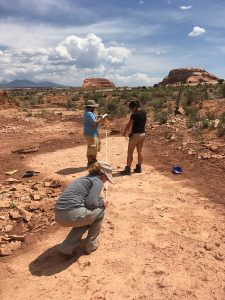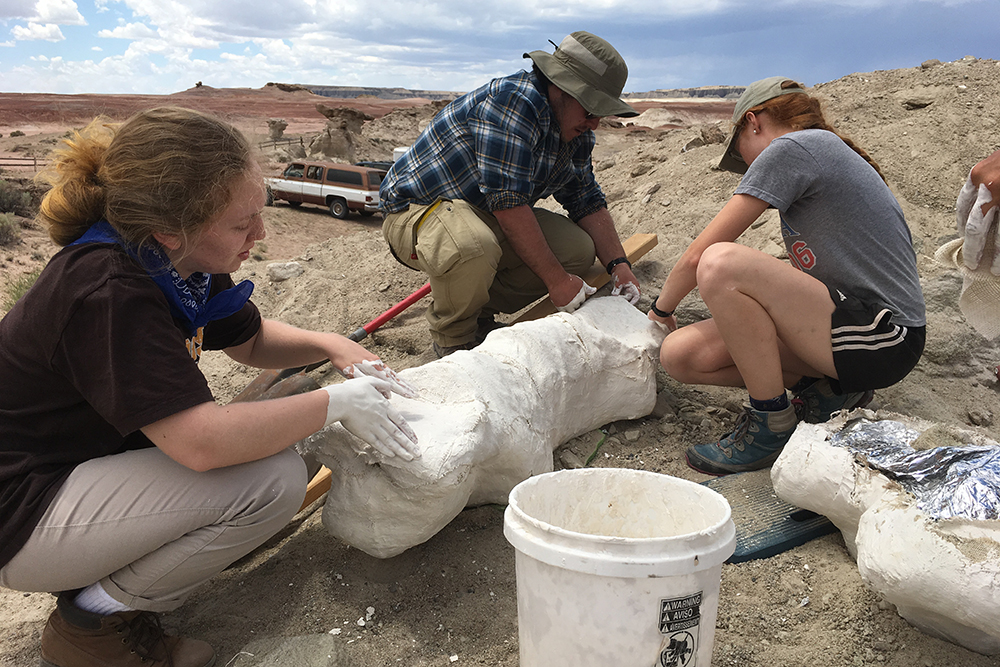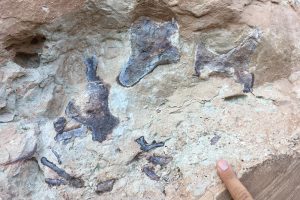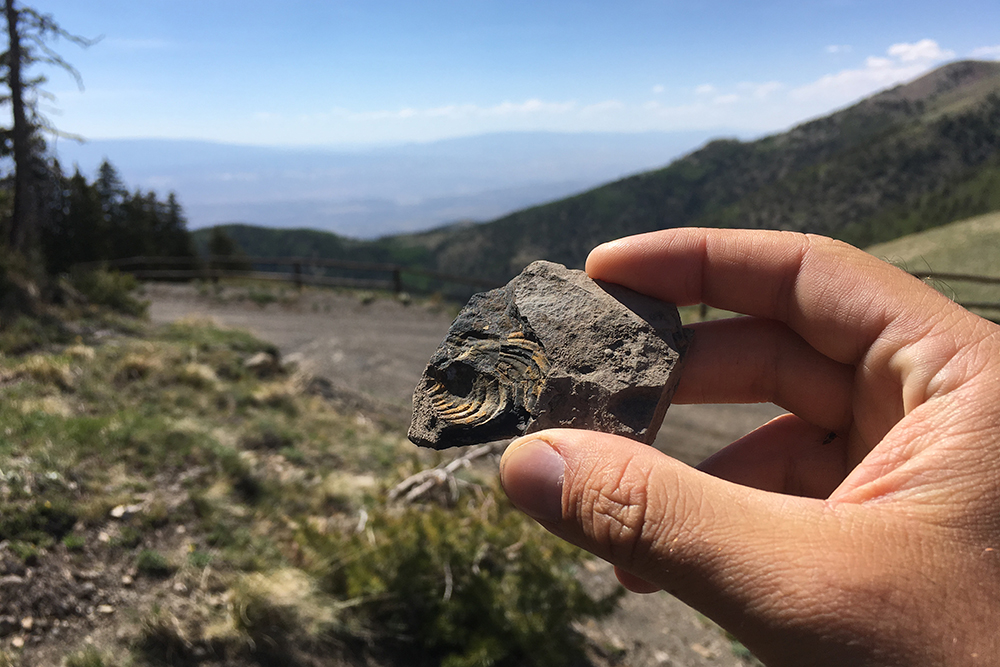 Dawn breaks, and students emerge at the edge of a national forest, the Rocky Mountains towering above. Chisels and rock hammers in hand, the students head to a quarry to dig for dinosaur bones with experienced paleontologists.
Dawn breaks, and students emerge at the edge of a national forest, the Rocky Mountains towering above. Chisels and rock hammers in hand, the students head to a quarry to dig for dinosaur bones with experienced paleontologists.
Summer at Adelphi doesn’t have to mean summer in New York. For some students, summer at Adelphi is a course in adventure.
For the third year in a row, Michael D’Emic, Ph.D., assistant professor of biology, is taking students on a 3-credit field course to dig sites in northern Wyoming and southern Montana. Scheduled for July 22 to July 31, the trip includes side visits to Yellowstone National Park and Bighorn Canyon National Recreation Area.
Dr. D’Emic has his own dig site in the area, which he’s been working on for about a decade. He has found nearly 400 bones there, including those of new species, juveniles from already-known species, plant fossils and invertebrate fossils.
Students will join him at his site later in the trip once they’re a little more experienced, and can also expect to dig in Jurassic rocks, Cretaceous rocks and more recent rocks from the age of mammals.
For students like Tom Pascucci, who took the course last year and is now a graduate student studying paleontology under Dr. D’Emic, this type of fieldwork was vital for his graduate school application process.
“The intimate interaction of working side by side with professionals in the field better prepared me for future academic success and, hopefully, a career in paleontology,” he said.
Dr. D’Emic agrees that the course is an incredible opportunity for anyone interested in paleontology, biology, or some kind of evolutionary, ecological or environmental science. Students gain new skills, an impressive résumé item and exposure to different careers in the field. The trip is open to students from Adelphi as well as other schools.
“I had one student come who wanted to be a physical therapist but was just interested in biomechanics and the outdoors and wanted to get some credit,” Dr. D’Emic said. “I have another student who is actually in a premed program, but just finds all sorts of biology fascinating and wants to take the course to broaden that interest.”
Because the class is limited to 10 students, Dr. D’Emic can tailor some of what he teaches. The program begins with online coursework in the weeks leading up to the trip to help students prepare.
In the field, each day starts with an hour-long lecture on one of a variety of topics—for example, how fast dinosaurs grew and how scientists know that information from studying bones. Students then dig, gathering samples that relate to their lessons, and end each day with a short project that puts the morning’s lessons into action.

Throughout the day, Dr. D’Emic and other paleontologists work with the students on geologic mapping and geographic information system (GIS) technologies, bone extraction, and other skills that are difficult to learn in the classroom.
Adelphi senior ReginaLena McManus, who attended the trip last year, learned skills applicable to archaeology, her possible career path.
“At the quarry, I learned and practiced skills such as pedestaling the fossil, applying Vinac to prevent the bone from crumbling, and plastering to protect the fossil to be removed and transported to the museum,” she said. These are skills necessary for gently removing the fossil from the earth and preserving it for transporting it to and studying it in the lab.

Last summer, the class visited a site that had just been discovered, and Adelphi students were able to uncover dinosaur footprints themselves. They then used photogrammetry—a method of digitally taking measurements from photographs—and 3-D printing to create models. This year, students will visit sites where juvenile dinosaur fossils were discovered, thanks to a partnership with the Bighorn Basin Paleontological Institute.
“There is no way to describe the feeling of uncovering a dinosaur bone, of being the first person to view something that has been buried for 150 million years!” said Pascucci.

 Dawn breaks, and students emerge at the edge of a national forest, the Rocky Mountains towering above. Chisels and rock hammers in hand, the students head to a quarry to dig for dinosaur bones with experienced paleontologists.
Dawn breaks, and students emerge at the edge of a national forest, the Rocky Mountains towering above. Chisels and rock hammers in hand, the students head to a quarry to dig for dinosaur bones with experienced paleontologists.


